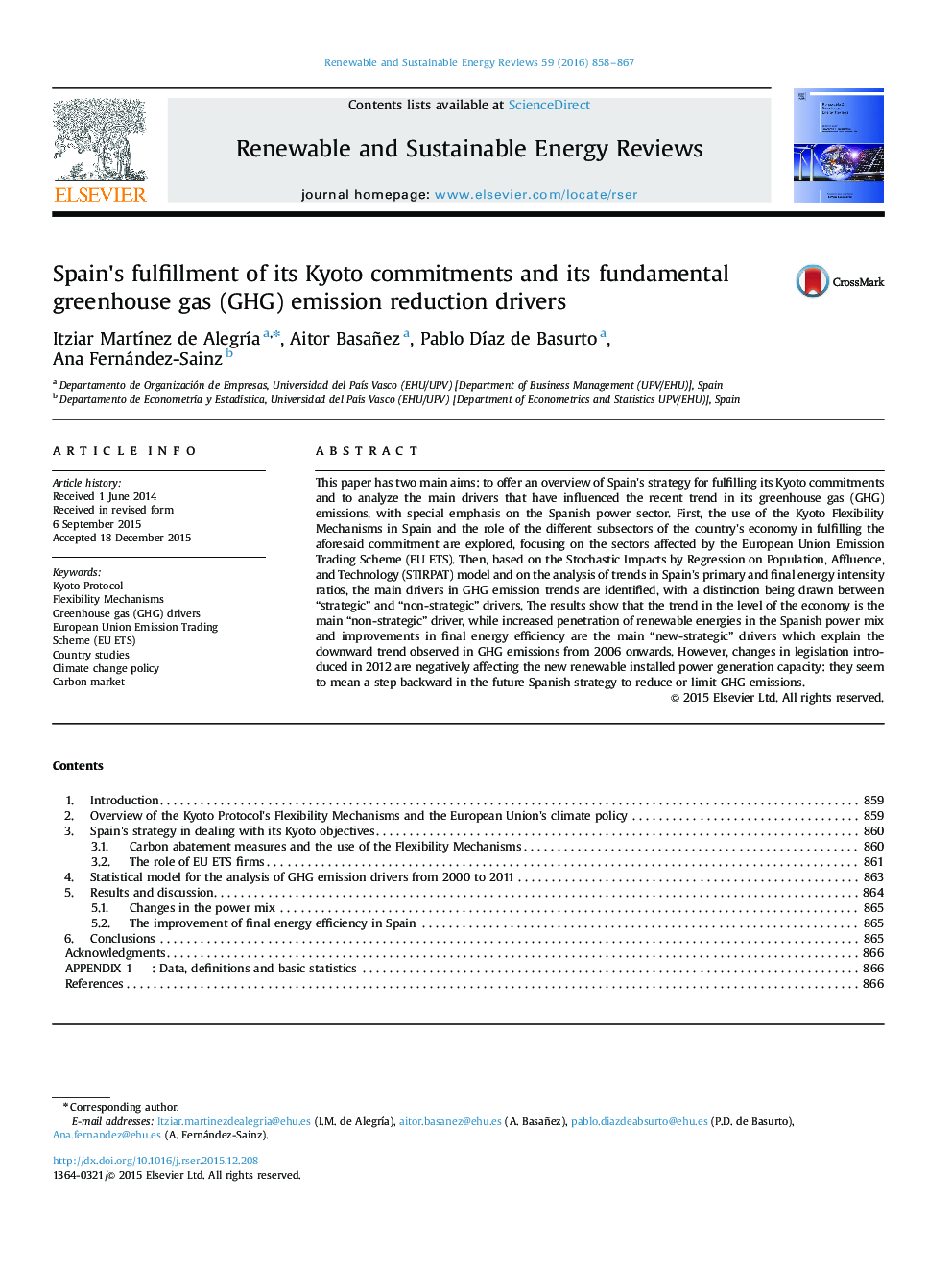| Article ID | Journal | Published Year | Pages | File Type |
|---|---|---|---|---|
| 8114253 | Renewable and Sustainable Energy Reviews | 2016 | 10 Pages |
Abstract
This paper has two main aims: to offer an overview of Spain׳s strategy for fulfilling its Kyoto commitments and to analyze the main drivers that have influenced the recent trend in its greenhouse gas (GHG) emissions, with special emphasis on the Spanish power sector. First, the use of the Kyoto Flexibility Mechanisms in Spain and the role of the different subsectors of the country׳s economy in fulfilling the aforesaid commitment are explored, focusing on the sectors affected by the European Union Emission Trading Scheme (EU ETS). Then, based on the Stochastic Impacts by Regression on Population, Affluence, and Technology (STIRPAT) model and on the analysis of trends in Spain׳s primary and final energy intensity ratios, the main drivers in GHG emission trends are identified, with a distinction being drawn between “strategic” and “non-strategic” drivers. The results show that the trend in the level of the economy is the main “non-strategic” driver, while increased penetration of renewable energies in the Spanish power mix and improvements in final energy efficiency are the main “new-strategic” drivers which explain the downward trend observed in GHG emissions from 2006 onwards. However, changes in legislation introduced in 2012 are negatively affecting the new renewable installed power generation capacity: they seem to mean a step backward in the future Spanish strategy to reduce or limit GHG emissions.
Related Topics
Physical Sciences and Engineering
Energy
Renewable Energy, Sustainability and the Environment
Authors
Itziar MartÃnez de AlegrÃa, Aitor Basañez, Pablo DÃaz de Basurto, Ana Fernández-Sainz,
